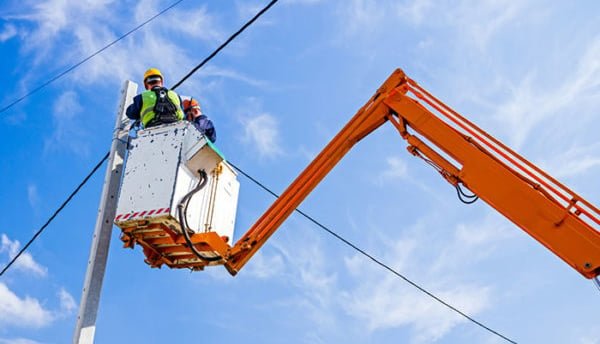Cultivate a Strong Health and Safety Culture
Learn how Ontario employers can build a proactive workplace safety culture through leadership, training, and OHSA compliance with Achieve Safety.
A thriving workplace safety culture isn’t built overnight—it’s developed through leadership, training, and commitment at every level. This guide explores how Ontario businesses can align with OHSA standards, empower employees, and create safer, more compliant workplaces that protect both people and productivity.
Why Health and Safety Culture Matters
In Ontario’s evolving work environment, safety isn’t optional—it’s the foundation of sustainable business success.
Beyond meeting the Occupational Health and Safety Act (OHSA) requirements, fostering a safety-first culture reduces workplace accident injuries, lowers WSIB costs, boosts employee morale, and enhances operational efficiency.
It signals to your team that their well-being truly matters.
1. Lead from the Top: Management Sets the Tone
A strong health and safety culture begins with leadership that models the behaviour it expects.
Executives and supervisors must:
-
Invest in safety resources—allocate budget and time for training and inspections.
-
Participate visibly—attend toolbox talks and training sessions with workers.
-
Integrate safety into KPIs—tie safe practices to performance evaluations.
When leaders embody safety values, employees follow suit—turning policy into practice.
2. Empower Your Team: Safety Is Everyone’s Job
Safety thrives when every worker becomes a stakeholder.
Encourage:
-
Active participation in safety committees, hazard assessments, and policy updates.
-
Open communication channels for reporting near-misses or unsafe conditions without fear of reprisal.
-
Recognition programs that celebrate safe behaviours, reinforcing positive habits across departments.
Empowered workers aren’t just safer—they’re more engaged and accountable.
3. Train with Purpose: Turn Knowledge into Habit
Training is the backbone of any strong safety culture. Move beyond one-time onboarding to continuous, task-specific learning.
Effective training programs include:
-
OHSA compliance and awareness sessions for all staff.
-
Specialized programs such as Working at Heights, WHMIS, Ladder Safety, and Confined Space Entry.
-
Supervisor training focused on hazard control, emergency response, and worker engagement.
Partnering with a certified safety training provider like Achieve Safety ensures your sessions are compliant, engaging, and tailored to your industry.
4. Be Proactive: Identify and Eliminate Risks Early
Reactive safety costs time, money, and trust.
A proactive safety system focuses on prevention through:
-
Regular workplace inspections and risk assessments.
-
Corrective actions logged and tracked for completion.
-
Data-driven insights from incident reports to predict and prevent future risks.
Proactivity turns compliance into competitive advantage.
5. Learn, Adapt, and Improve Continuously
Even mature safety systems can evolve. Every near-miss or inspection is an opportunity to learn.
Implement continuous improvement by:
-
Conducting root cause analyses after incidents.
-
Reviewing and updating safety policies quarterly.
-
Sharing key learnings across teams and projects.
A culture of improvement ensures your safety program grows with your organization and changing regulations.
6. The ROI of Safety: Why It’s Good Business
Investing in safety isn’t an expense—it’s a growth strategy. Companies with strong safety cultures report:
-
Fewer lost-time injuries and WSIB claims
-
Higher employee retention and morale
-
Improved productivity and brand reputation
In short, safer workplaces outperform their peers in the long run.
Partner with Achieve Safety: Building Safer Workplaces Across Ontario
At Achieve Safety, we help Ontario businesses meet and exceed OHSA requirements through customized Ontario safety training programs and workplace audits . Whether you’re a small contractor in Guelph or a warehouse in Mississauga, our experts design systems that fit your operations, workforce, and compliance goals.
📞 Book a Free Safety Consultation and start cultivating a workplace culture that protects your people—and your bottom line.
sources
- https://pmc.ncbi.nlm.nih.gov/articles/PMC9603379/
- https://www.researchgate.net/publication/271589125_Health_and_Safety_Culture
FAQs – Building a Culture of Workplace Safety
Q1. What is a workplace safety culture?
A workplace safety culture refers to the shared attitudes, values, and behaviours that prioritize health and safety at every level of an organization. It means employees and management alike are committed to preventing injuries, following safety procedures, and continuously improving workplace conditions.
Q2. How can Ontario businesses build a strong safety culture?
Ontario employers can strengthen their safety culture by leading with visible commitment, empowering workers to speak up about hazards, investing in regular OHSA-compliant training, and proactively assessing workplace risks. Partnering with a certified consulting firm like Achieve Safety ensures your policies align with provincial safety regulations.
Q3. Why is leadership important in workplace safety?
Leadership sets the tone for safety. When managers participate in training, enforce standards, and allocate resources for safety programs, it sends a clear message that health and safety are non-negotiable priorities. This top-down example motivates employees to adopt the same standards.
Q4. What role do employees play in maintaining workplace safety?
Employees are the eyes and ears of the workplace. Their role includes reporting hazards, attending training, following procedures, and supporting colleagues in maintaining safe practices. Engaged employees help prevent incidents and strengthen the overall safety culture.
Q5. What are the benefits of investing in workplace safety training?
Comprehensive training reduces workplace accidents, improves compliance with the Occupational Health and Safety Act (OHSA), and enhances employee confidence. It also lowers WSIB costs and builds a safer, more productive environment across all levels of the organization.
Q6. How often should safety training be updated?
Safety training should be refreshed at least annually, or whenever new equipment, processes, or regulations are introduced. Ongoing education ensures that employees stay informed and compliant with current Ontario safety standards.
Q7. How does Achieve Safety help organizations improve their safety culture?
Achieve Safety provides full-service workplace health and safety solutions across Ontario, including customized training, compliance audits, and policy development. Their consultants help organizations meet OHSA standards and cultivate lasting safety practices that protect both employees and operations.







